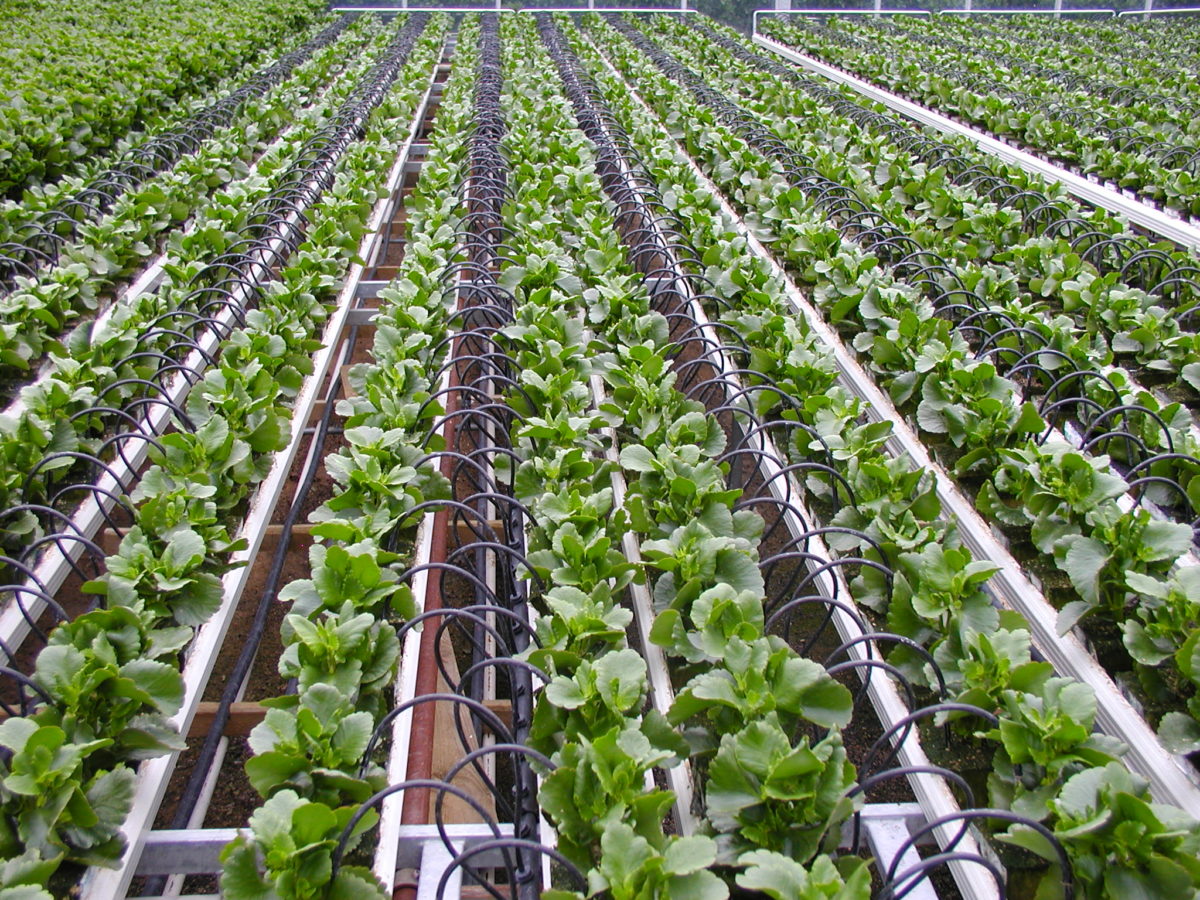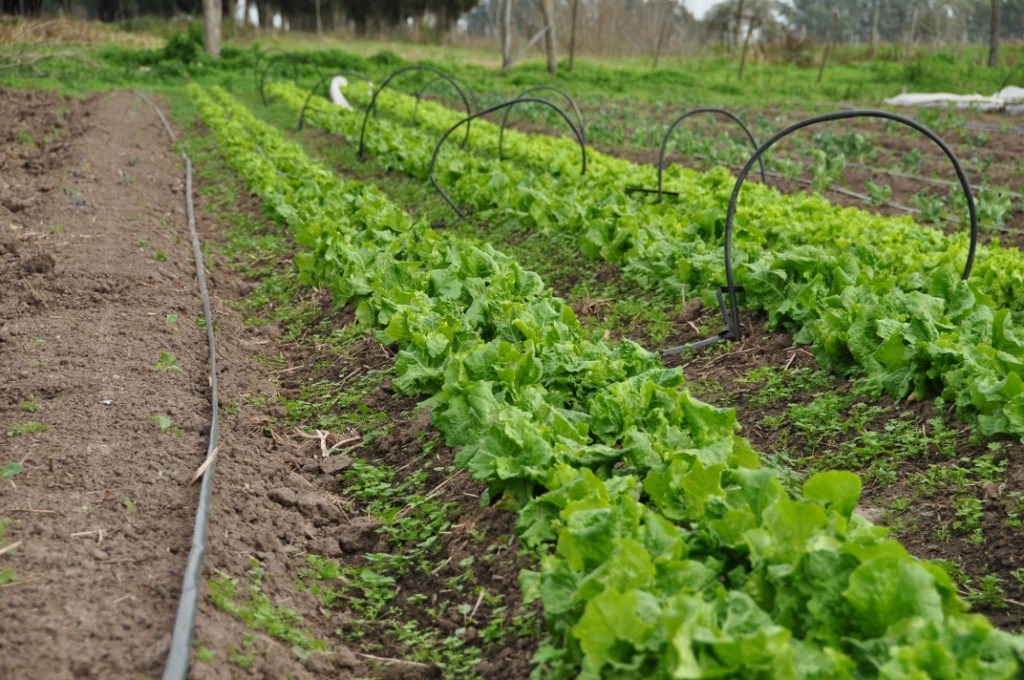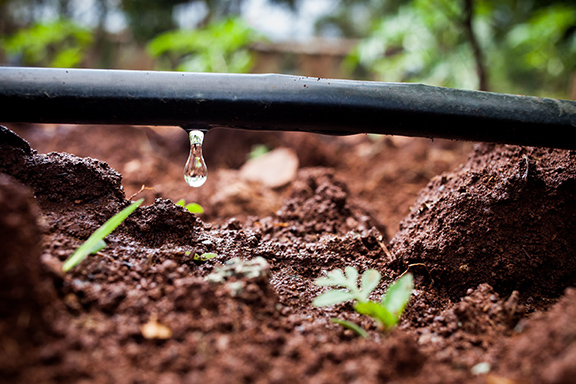

Grow Bigger Bounties with Less Work
Both backyard gardeners and farmers know the value of a good drip irrigation system. Plants raised with drip irrigation are healthier. They are bigger and produce a far larger yield with less work. Drip systems use less water while being able to provide water-soluble fertilizers directly to the root systems. Drip systems also do not promote plant diseases in the way that overhead irrigation systems do.
Advantages of Drip Systems
Drip systems allow you to pinpoint which areas get water. This means that weeds will not be getting watered as much. Watering is also easier to control. Unlike overhead irrigation or watering by hand, water is put only where it is needed. You will not have to worry about getting everything wet, just the root zone.
Drip irrigation systems are also easy to build. They use simple parts that snap together much like building blocks. Your drip line and connectors can be used with or without a pump, making these systems easy on the wallet too.
Starting Out with the Basics
Perhaps the simplest drip irrigation system uses soaker hoses set next to the plants you want watered. They are perfect for watering row crops such as carrots, tomatoes and beans. A soaker hose is a piece of hosing that can be up to 200 feet long. These hoses slowly ooze water through small holes or pores along the entire length. These hoses can be left in the bed or can be moved around as needed.
Crops such as grape vines or trees need a more sophisticated drip system. Container grown crops also benefit from using drip irrigation. These low pressure water systems move water through each drip line and the connectors put water exactly where it is needed without waste.
Basic Irrigation Supplies for Setup
The water will flow from the faucet or other source. Many systems are set up to use non-potable water from rain water barrels for greater water efficiency. The water is first filtered, to remove sediment that can clog the system. The water will next run through a pressure regulator. This keeps your water flow at the most efficient rate for the emitters. These small devices directly release the water slowly to the plants. Drip tape can be used instead of emitters. These slightly squished hoses have small holes along their length. They can be used in plots that need water to be more evenly distributed.
Larger gardens and fields can use more complex systems. A farmer can choose to water different parts of his or her fields at different intervals with the use of control valves and alternating lines. Controlling the water flow in this way helps the plants to grow a proper root system that is not concentrated around the water line.

Reap the Benefits
Using drip irrigation has a number of benefits. A drip system can be run without using electricity. This simple system, when used in a fairly flat area, uses the power of gravity to water your plants. This is particularly true of reclaimed rain systems. The water is stored in a barrel or tank. When you need to water your crop you turn the faucet on. The water then flows through your pipes.
Your soil is healthier. Water run off leeches the nutrients from soil over time. Local application of small amounts of water does not create run off. This also means that less fertilizer is needed, saving you money. Over time the soil becomes richer naturally. Organic gardening in particular becomes more productive. Natural nutrients from organic fertilizers are allowed to develop the soil’s biosphere.
Improved plant growth is perhaps the most noticeable benefit. Plants do best when they do not have stress from variations in soil moisture. This slows growth. Over time it results in smaller crop yields. Overhead sprinkler systems also water undesirable plants. Those plants can stunt the growth of your crops. Deny water to the weeds and they shrivel up.
Use Your Resources Intelligently
- Water-soluble fertilizers and treatments can be applied to each plant through the drip system, saving time and energy.
- The low flow rate lets you irrigate more area to reach more plants at the same time.
- Drip systems can be used in every soil type.
- Drip systems can be used in every soil type.
- Setting up drip irrigation is less expensive than setting up underground sprinkler or bubbler systems.
- Sprinkler systems can be easily converted to use drip hardware.
- Native plants and commercial crops both do better in dry weather with drip irrigation.
- Different water needs of different plants are easily met with use of tailored emitters.
- Plants look fuller and healthier, with larger flowers and fruit.
Setting up a drip irrigation unit may seem difficult at first. But it is well worth the time. You can create your own drip system using these implements to grow larger ad healthier plants with minimal effort.
